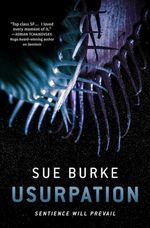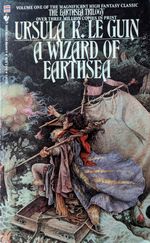Fedora Linux
★★★★☆
Fedora Workstation is still my favorite Linux for desktop use (followed by Debian as a close second), but every once in a while you’re reminded that IBM (via Red Hat) still has an out-sized influence on it.
Part of it is familiarity. But it’s also a good balance between a fast-changing, rolling distribution like Arch and a slower, stability-focused distribution like Debian. So it’s fast enough to get new drivers and update apps, but still has stable checkpoints.
Fedora’s easy to install. It walks you through choosing your setup and gives you a working, GUI desktop at the end. It’s not quite as user-friendly a setup as Linux Mint, but the configuration tools are more consistent than Ubuntu-based distros. And like Debian, it’s available on multiple architectures, so you don’t need to look for a downstream aarch64 variant in order to install it on ARM hardware.
Available Software
The main software repository has a lot of official packages for programs across the Linux ecosystem, so it’s rare that I need to resort to a Flatpak, Snap, binary or local build. And they’re updated frequently. Though I do have a handful of third-party repositories set up for things like Vivaldi and Sublime Text.
Unlike Ubuntu, which has separate apps for the system software updates and the Snap Store, Fedora puts everything into the Software application on GNOME or the Discover application on KDE Plasma. (Downside: GNOME Software insists on restarting for more updates than necessary. This is why I still use dnf from the command line most of the time. But if you don’t want to, you don’t have to.)
Gaming
Steam runs well on it. I used to dual-boot the system with Windows for gaming, but over the last couple of years Proton has gotten a lot better, and compatibility between Wayland and NVidia graphics has improved drastically. I’ve moved most of the Steam games I actively play over to the Linux partition. It’s been months since I’ve booted into Windows for anything other than maintenance. (I try to keep it current so that when I do want to use it, I won’t have to wait while it updates everything.)
Mostly Solid Upgrades
Major upgrades are usually reliable. I’ve been upgrading my main desktop piece by piece for ages, swapping in new hardware over time. The last clean install I did on it was in 2008 when I switched from a 32-bit motherboard/CPU combo to x86_64. I’ve moved the OS to new hard drives, and I’ve had to rescue the boot setup a couple of times due to hardware problems and dual-boot shenanigans. But OS upgrades haven’t broken it in all that time!
That said: Fedora 43 launched literally the day after I posted this, and broke a lot of systems. Mostly in connection with GDM and GNOME (the default login screen and desktop) dropping X11 support. (You can still run X applications on GNOME+Wayland, just not the whole desktop.) I’m in the habit of waiting a week for third-party repos to catch up, so I was able to check the forums and see what other people had run into before upgrading my system. As it turns out, this box upgraded smoothly. *whew!*
I have done more recent fresh installs on virtual machines, which is how I know the installer is still, you know, usable.
Yes, Very Atomic!
In addition to the more traditional setup where the system updates packages as needed, Fedora has a few “atomic” variations, where there’s a base system that’s updated as a whole, and applications installed on top of it, mainly through Flatpak. I’ve tried running Silverblue in virtual machines a few times, thinking it might be worth considering the next time I do a clean install, but there’s always something that doesn’t work quite right.
History and Priorities
Back in the stone age, Red Hat offered two Linux distributions: Red Hat Linux was their free, open system, and Red Hat Enterprise Linux was their professional release where you paid for support and got some really nice system management tools. I started using Red Hat Linux during this time.
In the early 2000s, Red Hat discontinued RHL in favor of Fedora Core, which they spun off into a sort of quasi-independent community project that would move faster than RHEL, and every few versions they’d take Fedora Core, stabilize it, and add their management tools for the next RHEL. This led to conflicting messages from Red Hat engineering and marketing as to whether Fedora Core was stable enough for actual use (spoiler: it already was). My favorite expression of this was the joke IRC log posted to the mailing list with marketing insisting that Fedora “will eat your brane.”
From the beginning there have been questions about how independent Fedora really is from Red Hat, and there have been several times they’ve made decisions that looked very much like they were based on RHEL goals. Even before IBM bought Red Hat. But for the most part it’s worked out over the last (checks calendar) 20 years. But that corporate pressure is still there, seen most recently in the debate over whether and how to allow LLM-generated code into the project. It’s going to be interesting to see how that shakes out. If it goes badly, I may finally switch this box to Debian, or distro-hop for a bit.

